The Risks of Mixing Alcohol and Codeine
Mixing alcohol and codeine is common, and often people don’t know the dangers.
You might think that taking both together will make pain relief stronger or help you relax even more, but the reality is more complicated.
While both alcohol and codeine are common substances, mixing them can lead to serious health risks, and in some cases, it can be life-threatening.
A staggering 1 in 5 overdose deaths are caused by mixing alcohol with opioids.[1]
Why Do People Mix Alcohol and Codeine?
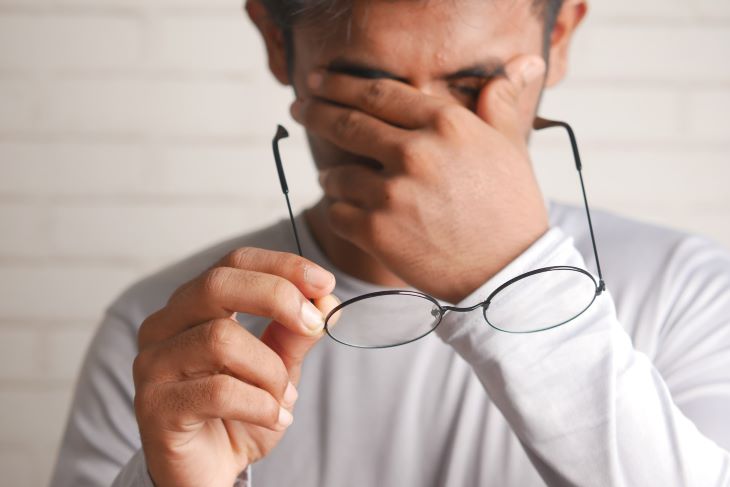
There are several reasons people mix alcohol with codeine, even though it’s risky:
- Pain relief: Some people believe that combining alcohol with codeine will enhance the pain-relieving effects
- Relaxation: Both substances can make you feel more relaxed or drowsy, so it may seem like a good idea to take them together to “unwind” after a stressful day
- Misunderstanding the risks: Many people are simply unaware of the dangers
The Growing Problem in the UK
In the UK, there has been a worrying rise in the misuse of codeine.
This opioid, which is found in painkillers and cough syrups, is often seen as less dangerous than stronger opioids like morphine or heroin. But this isn’t the case.
When mixed with alcohol, codeine becomes much more hazardous.
Both substances slow down your central nervous system. When used together, the effects are amplified. This can lead to breathing problems, unconsciousness, and even death.
In recent years, there has been a big increase in alcohol-related deaths:
- In 2021, the UK recorded 9,641 deaths related to alcohol – the highest figure ever documented
- This was a 7.4% increase from 2020, when 8,974 deaths were recorded
- From 2012 to 2019, the rate of alcohol-specific deaths in the UK remained steady[2]
What is Codeine? Understanding its Purpose and Risks
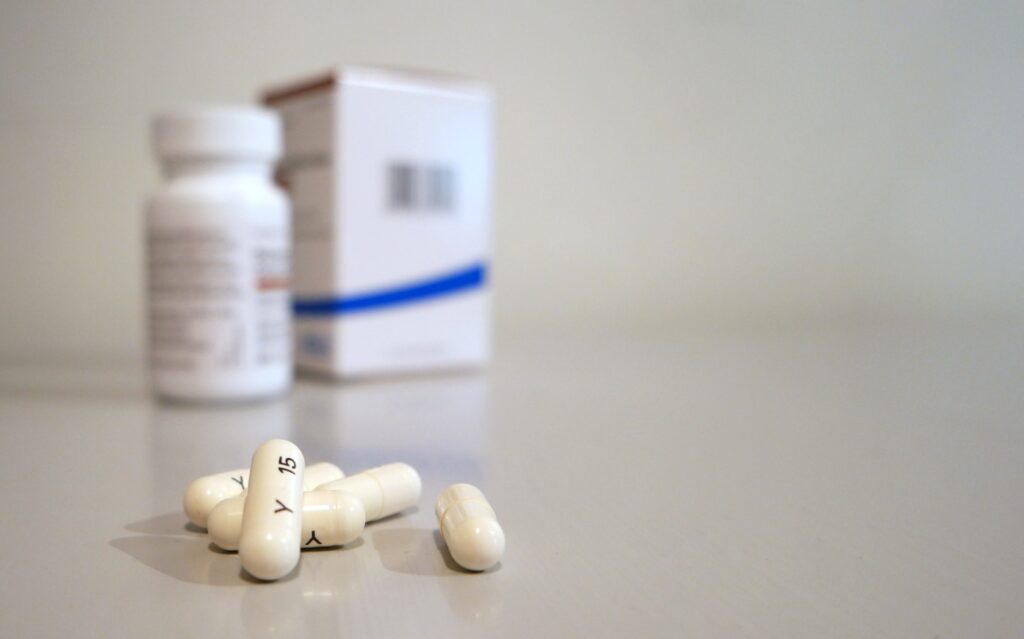
Definition of Codeine
Codeine is a painkiller made from the opium poppy plant. It belongs to the opioid family, like morphine, but is milder.
Doctors prescribe it for mild to moderate pain, such as after surgery or injury, and in some cough medicines.
Since codeine can be addictive, it’s a controlled substance in the UK, available only by prescription.
What’s Codeine Made From?
Codeine is derived from a natural chemical in the opium poppy. Your body converts it into morphine, which helps relieve pain.
However, this process also makes it potentially addictive if misused or taken for too long.
Medicines that Contain Codeine
Common medications with codeine include:
- Co-codamol: Combines codeine and paracetamol for pain relief[3]
- Cough syrups: A cough suppressant used for severe, persistent coughs
- Codeine phosphate: Pure codeine for stronger pain relief[4]
Some of these medications, especially cough syrups, contain small amounts of alcohol, increasing the risks when mixed with more alcohol.
Medical Uses of Codeine in the UK
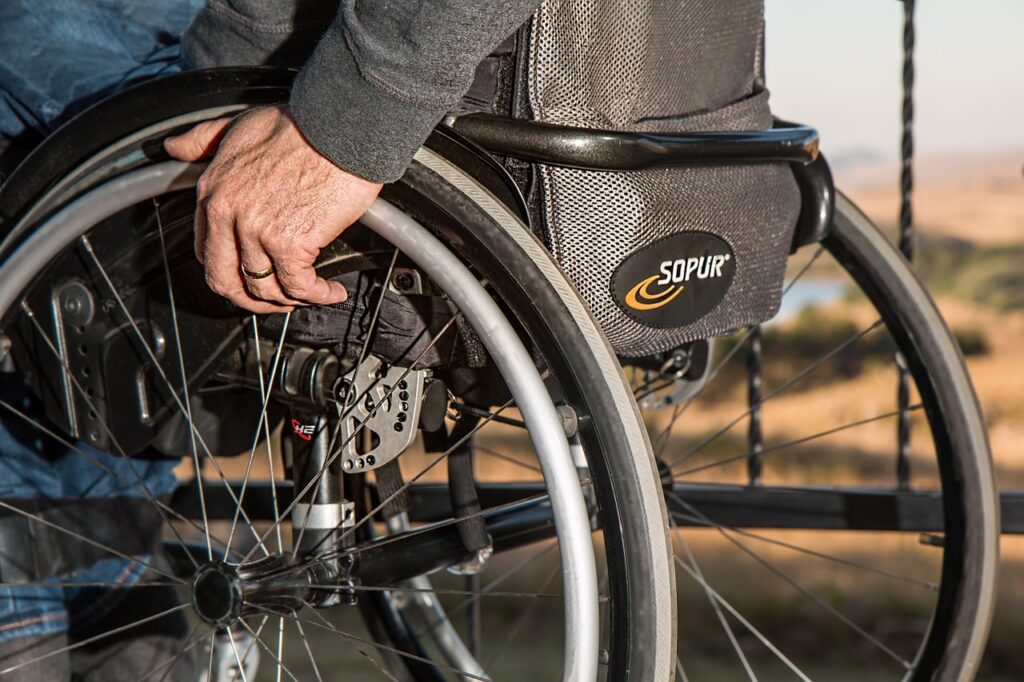
In the UK, codeine is used to:
- Relieve pain from injuries, surgeries, or chronic conditions
- Treat diarrhoea by slowing the digestive system
- Suppress severe coughing[5]
Codeine as an Opioid: How it Works
Codeine blocks pain signals to the brain and has a calming effect. However, both codeine and alcohol slow down your body’s functions, like breathing, making it dangerous to combine them.
How Does Alcohol Interact with Codeine?

The NHS advises that you can drink on codeine.
However, you should refrain from alcohol for a few days after starting codeine, so that you can see how it affects you.
If you feel tired while on codeine, it’s a good idea to stay away from alcohol.[6]
How Alcohol Affects the Body
After a few drinks, you might notice your thinking becomes slower, and your coordination feels off.
This is because alcohol depresses your central nervous system, slowing down brain activity.
As a result, your reaction times are delayed, your speech might slur, and you could struggle with balance.
In larger amounts, alcohol can cause:
- Memory blackouts
- Unconsciousness[7]
- Dangerously slow breathing[8]
These effects become especially dangerous when combined with other nervous system depressants like codeine.
Codeine’s Effect on the Central Nervous System
Codeine works by blocking pain signals from reaching your brain, making you feel more comfortable.[9]
But like alcohol, codeine also slows down your central nervous system. You may feel drowsy, lightheaded, or sleepy when you take it.
When codeine is mixed with alcohol, the sedative effects are amplified, making it harder for your body to function properly.
What Happens to My Body When I Mix Alcohol and Codeine?

- Sedation and drowsiness – If you mix alcohol and codeine, the sedative effects of both substances increase significantly[10]
- Risk of respiratory depression – This is when your breathing slows down to a dangerous level. If this happens while you’re asleep, you may not even notice the warning signs, leading to unconsciousness or death[11]
- Risk of overdose – The combination of alcohol and codeine greatly increases your risk of an overdose. This can lead to symptoms like confusion, vomiting, slow heart rate, and shallow breathing. In extreme cases, overdose can lead to death if not treated immediately[12]
- Low blood pressure – as your body relaxes, your blood pressure can plummet
- Coma – when the body shuts down, it eventually reaches coma
- Death – in extreme circumstances, the above symptoms can be lethal[13]
Why Alcohol Increases the Risk of Overdose
Alcohol intensifies codeine’s sedative effects, making it easier to overdose even on smaller amounts.
For example, a regular dose of codeine combined with a glass of wine can be enough to trigger respiratory depression.
Your breathing may become shallow, and your body might not get enough oxygen, leading to coma or death.
Alcohol also impairs judgment, which could lead to accidentally consuming more codeine or drinking too much.
Signs of Overdose to Watch Out For

Recognising overdose symptoms early can save a life. Watch for:
- Extreme drowsiness or inability to wake up
- Slow or irregular breathing
- Blue lips or fingertips (a sign of low oxygen)
- Cold, clammy skin
- Unresponsiveness[14]
These signs indicate that the body is struggling for oxygen and requires immediate medical attention.
How to Respond in an Emergency
If you suspect an overdose, call 999 immediately. Keep the person awake if possible.
If they are unconscious, place them in the recovery position (on their side) to prevent choking.
Use naloxone if available, as it can reverse opioid overdose, though it won’t help with alcohol poisoning.[15]
The Impact of Alcohol on Codeine Metabolism
Alcohol interferes with how your liver processes codeine.
Normally, your liver converts codeine into morphine, which provides pain relief. However, alcohol can speed up or slow down this process.
In some cases, it causes codeine to break down too quickly, leading to a sudden increase in morphine levels in your system, which can intensify its effects.
On the other hand, alcohol might prevent your liver from clearing codeine effectively, causing it to build up in your system.
This unpredictability adds to the danger of combining the two substances.[16]
The Short-Term Dangers of Mixing Alcohol and Codeine

Mixing alcohol and codeine can lead to serious short-term effects that amplify the risks of both substances:
- Extreme drowsiness and sedation – The combination of alcohol and codeine intensifies drowsiness, making it difficult to stay alert or function safely
- Impaired motor skills and cognitive function – Mixing these substances impairs your ability to think clearly and control your movements, leading to confusion and poor coordination
- Nausea, vomiting, and dehydration – Alcohol and codeine together can cause severe nausea, vomiting, and dehydration, leaving you feeling weak and dizzy
- Loss of coordination and increased risk of accidents – The combination affects your coordination, increasing the risk of falls, injuries, and accidents during daily tasks
- Potential for blackouts and memory loss – Mixing alcohol and codeine can result in blackouts, where you function but later have no memory of what happened
- Emotional instability and risk of depression – Alcohol and codeine are both depressants, so mixing them can amplify the effects[17]
The Psychological Impact of Mixing Alcohol and Codeine

Mixing alcohol and codeine can have serious effects on your mental health, with consequences that go beyond just physical dependency.
Here’s what you need to know about the psychological risks.
The Dual Depressive Effect on Mental Health
Both alcohol and codeine are depressants[18], and when used together, they can significantly worsen feelings of sadness and hopelessness.
If you’re feeling down after a hard day and drink alcohol while on codeine, instead of relaxing, you may feel emotionally flat or even more depressed.
Over time, this emotional suppression can make it difficult to feel joy or motivation, leaving you stuck in a low mood cycle.
Emotional Dependency and Co-dependency on Alcohol and Codeine
Regularly using alcohol and codeine to manage stress or pain can lead to emotional dependency.
Over time, you may find it difficult to cope with even minor stress without reaching for both substances.
This creates a dangerous codependency where alcohol and codeine become the only way you feel capable of managing your emotions.
Symptoms of Codeine Withdrawal

Opioid withdrawal can cause:
- Sweating
- Watery eyes and runny nose
- Diarrhoea
- Sickness
- Anxiety
- Cramps
- Sleep disruption
- Hot and cold flushes[19]
These symptoms can be uncomfortable, but they are rarely life-threatening.
Symptoms of Alcohol Withdrawal

Alcohol withdrawal can be more dangerous, especially if you’ve been drinking heavily for a long period.
Symptoms of alcohol withdrawal typically include:
- Low mood or depression
- Low appetite
- Headaches
- Anxiety and jitters
- Shakes or tremors
- Sweating
- Tiredness and fatigue
- Sickness and vomiting
- Problems sleeping[20]
Due to the risk of severe symptoms, it’s important to seek medical advice before stopping drinking, particularly if you have been drinking heavily.
A medically supervised detox may be necessary.
Managing Co-codamol and Alcohol Withdrawal
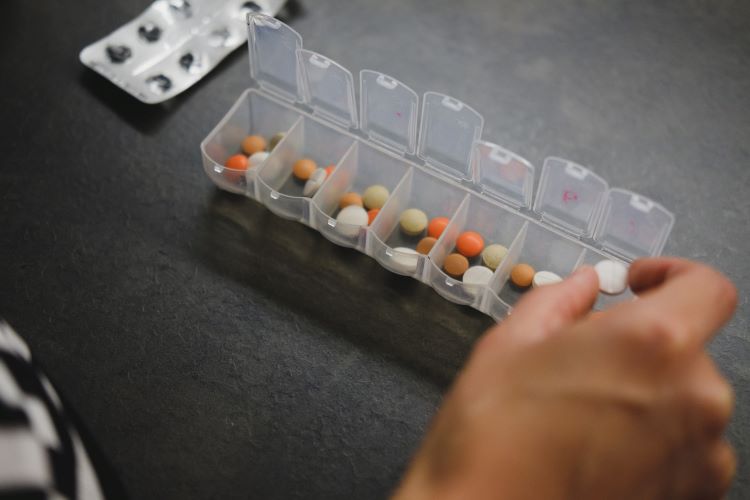
The best approach for managing withdrawal is through medical supervision, especially if you’ve been using both substances for a long time. Here’s what may help:
- Tapering Off – Gradually reducing your dosage of co-codamol and alcohol rather than quitting cold turkey can help minimise withdrawal symptoms. Your doctor may set up a tapering schedule
- Medication – For alcohol withdrawal, medications like benzodiazepines may be prescribed
- Hydration and Nutrition – Drink plenty of fluids, and focus on eating balanced, nutritious meals
- Rest and Sleep – Prioritise rest, create a calming bedtime routine, and avoid caffeine or other stimulants
- Support Systems – Emotional support from friends, family, a counsellor or twelve-step support group can help during withdrawal
Codeine Dependence and Alcoholism: A Vicious Cycle

Becoming dependent on codeine and alcohol can create a harmful cycle that is difficult to break.
Many people start with one substance and then, over time, turn to the other, leading to a dangerous combination.
How Can Dependency on Codeine Lead to Alcohol Abuse?
Dependency on codeine often starts with its legitimate use for pain relief.
However, as your body becomes used to the drug, you may find that you need higher doses to achieve the same effect.
This is known as tolerance. As codeine’s effects diminish, some people turn to alcohol to enhance its sedative or pain-relieving effects.
Alcohol can seem like a quick way to boost the high that codeine no longer provides.
What starts as occasional drinking with codeine can develop into a dangerous routine where both substances are used regularly.
Over time, using both codeine and alcohol together becomes more about avoiding withdrawal symptoms than about relieving pain or stress.
This reliance creates a cycle that is hard to escape.
Signs and Symptoms of Addiction
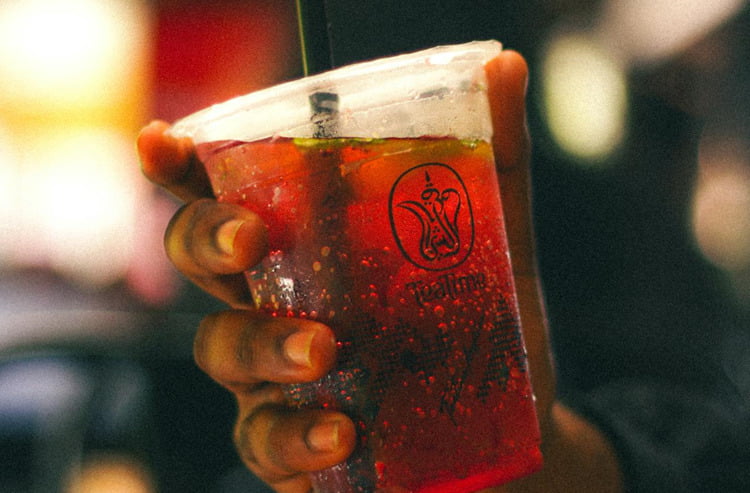
Common signs of substance use disorder and alcoholism include:
- Increased tolerance: Needing more of the substance to get the same effect
- Withdrawal symptoms: Feeling sick, anxious, or irritable when not using codeine or alcohol
- Loss of control: Using more than intended or for longer periods
- Neglecting responsibilities: Work, family, or social commitments suffer as substance use takes priority
These symptoms are often ignored in the early stages, but they are key signs that you may be dependent on one or both substances.
Physical and Psychological Signs of Codeine and Alcohol Abuse
Abuse of codeine and alcohol affects both your body and mind.
Physically, you might experience:
- Liver damage from alcohol use, which can lead to cirrhosis or liver failure
- Digestive issues, like chronic constipation from codeine or stomach ulcers from alcohol
- Fatigue and poor coordination due to the sedative effects of both substances
Psychologically, you may struggle with:
- Memory problems or confusion due to the long-term effects on the brain
- Mood swings, where you feel irritable or anxious when not using
- Emotional numbness, where you struggle to feel normal emotions without substances[21]
Over time, the physical and emotional toll can become overwhelming, making it harder to imagine life without codeine or alcohol.
The Difficulty of Withdrawing from Both Substances Simultaneously
Withdrawing from codeine and alcohol at the same time can be dangerous, especially if you have been using high doses.
A medically supervised detox is often necessary to safely manage both withdrawals.
Who is Most at Risk? Identifying Vulnerable Groups

Certain groups are more vulnerable to developing a dependency on alcohol and codeine.
- Teens and young adults: Teens and young adults are at risk of mixing alcohol and codeine due to curiosity and peer pressure, often underestimating the dangers of addiction
- People with a history of substance abuse: Individuals with past substance abuse issues may misuse codeine, and combined with alcohol, it can lead to a dangerous cycle of addiction
- People using codeine for chronic pain: Chronic pain sufferers may develop tolerance to codeine and turn to alcohol for added relief, creating a dependency on both substances
- Mental health conditions and risk of abuse: Those with anxiety or depression are more likely to misuse alcohol and codeine to cope, which can worsen their mental health over time
- Those mixing for recreational use: Many young adults mix alcohol and codeine for recreational use, but this can quickly lead to dangerous side effects and addiction[22]
The Importance of Medical Supervision When Using Codeine

Codeine is an opioid, so taking it without proper medical supervision can lead to addiction or misuse.
Regular check-ins with your doctor can help them spot issues early and adjust your treatment as needed to prevent addiction.
How to Safely Use Codeine Without Alcohol
Even a small amount of alcohol can amplify codeine’s effects.
It’s safest to completely avoid alcohol while taking codeine to prevent these risks, even if you’re only drinking socially.
Steps to Take if You’re Prescribed Codeine and Regularly Consume Alcohol
If alcohol is part of your routine, like having a drink with dinner or during social events, and your doctor prescribes codeine, it’s essential to inform your doctor.
They may recommend stopping alcohol or switching you to a safer painkiller.
If reducing your alcohol intake is challenging, your doctor can provide support or refer you to counselling.
Preventing Codeine and Alcohol Abuse: What You Can Do

With the right precautions, you can safely take codeine and drink without harm.
Alternative Pain Management Techniques to Avoid Codeine Use
If you are managing pain, it’s important to explore other options besides codeine:
- Safer painkillers – ask your doctor if there are any alternative medicines you could take
- Exercise – swimming, walking, cycling and yoga are all good ways to reduce pain
- Distracting yourself – staying at work or looking after children can distract you from the pain, and help you stay active
- Physical therapy – physiotherapists, chiropractors and osteopaths can all help you to stretch and move your body in a way that relieves pain[23]
These methods offer effective relief without the risk of dependency on opioids like codeine.
Setting Clear Guidelines for Alcohol Use While on Medication
If you’re prescribed codeine, it’s essential to avoid alcohol.
Even if you usually enjoy a drink with dinner, alcohol can increase the risks associated with codeine, such as extreme drowsiness or breathing problems.
Set a clear boundary for yourself and communicate it to others. If you go out with friends, let them know you’re not drinking while on codeine.
This helps avoid uncomfortable situations where someone might offer you alcohol, not knowing the risks.
Alcohol and Codeine Addiction
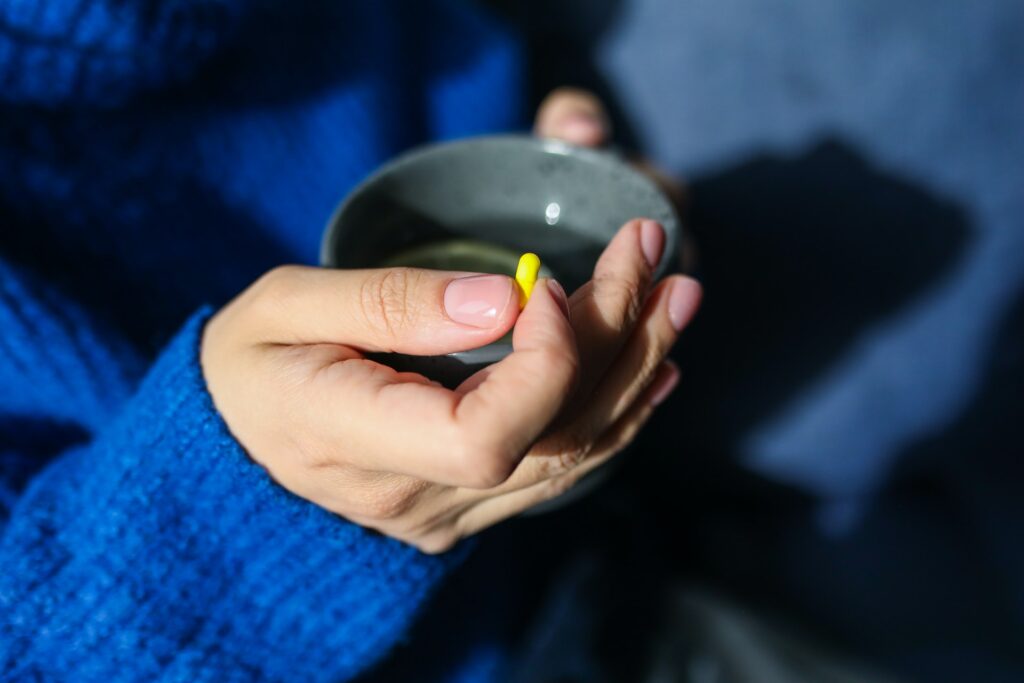
If you’re struggling with alcohol and codeine addiction, it’s important to seek help as soon as possible.
The combination of these substances can be dangerous, but there are many treatment options available to guide you through recovery.
Where to Get Help for Drugs
In the UK, you can access drug and alcohol treatment services through the NHS or private healthcare providers.
Your first step should be contacting your GP, who can assess your needs and refer you to local drug and alcohol services.
These services offer counselling, medical support, and rehabilitation programs tailored to your situation.
Charity and Private Drug Treatment
Several charities provide free and confidential services to help those battling addiction.
These organisations can offer counselling, group therapy, and residential rehab programs for those with severe addiction.
- Addaction: Offers support for alcohol and drug addiction through local services
- Turning Point: Provides a wide range of treatment options, including detox and rehab
- Talk to Frank: A confidential service that offers advice and support for drug problems
Private treatment centres are also available if you’re seeking more immediate and intensive care.
These clinics typically offer personalised treatment plans and 24/7 support, though they come at a cost.
Therapies and Treatments for Addiction

There are many therapies and treatments that can help you tackle drug and alcohol problems:
- Drinking diary – write down how many alcoholic drinks you’ve had, and how many units you drank. This will help you understand your drinking patterns, and how you can cut down
- Brief intervention – the NHS offers short chats designed to help you understand more about your patterns of drinking
- Cognitive Behavioural Therapy (CBT): this therapy helps individuals identify and challenge negative thought patterns and behaviours to develop healthier responses
- Dialectical Behaviour Therapy (DBT): DBT focuses on teaching skills like emotional regulation, distress tolerance, and mindfulness, particularly for those dealing with intense emotions or self-destructive behaviours
- 12-Step Facilitation: based on the principles of Alcoholics Anonymous, this approach encourages individuals to accept addiction as a chronic illness and to engage in regular support groups
- Motivational Interviewing (MI): this client-centered method helps people find the motivation within themselves to change harmful behaviours by exploring their own goals and values
- Contingency Management (CM): this strategy uses positive reinforcement, such as rewards or vouchers, to encourage sobriety and reinforce positive behaviours
- Family Therapy: family therapy involves working with family members to address dynamics and improve communication, offering support to both the individual in treatment and their loved ones
Treatment with Medicine
For alcohol and opioid addictions like codeine, medicines can help reduce cravings or manage withdrawal symptoms:
- Disulfiram (Antabuse): Makes you feel unwell if you drink alcohol, helping to deter drinking
- Acamprosate: Helps reduce cravings for alcohol
- Methadone or Buprenorphine: Used to reduce withdrawal symptoms for opioid addiction
You can access these medications through the NHS or private clinics under medical supervision.[24]
Detoxification (Detox)
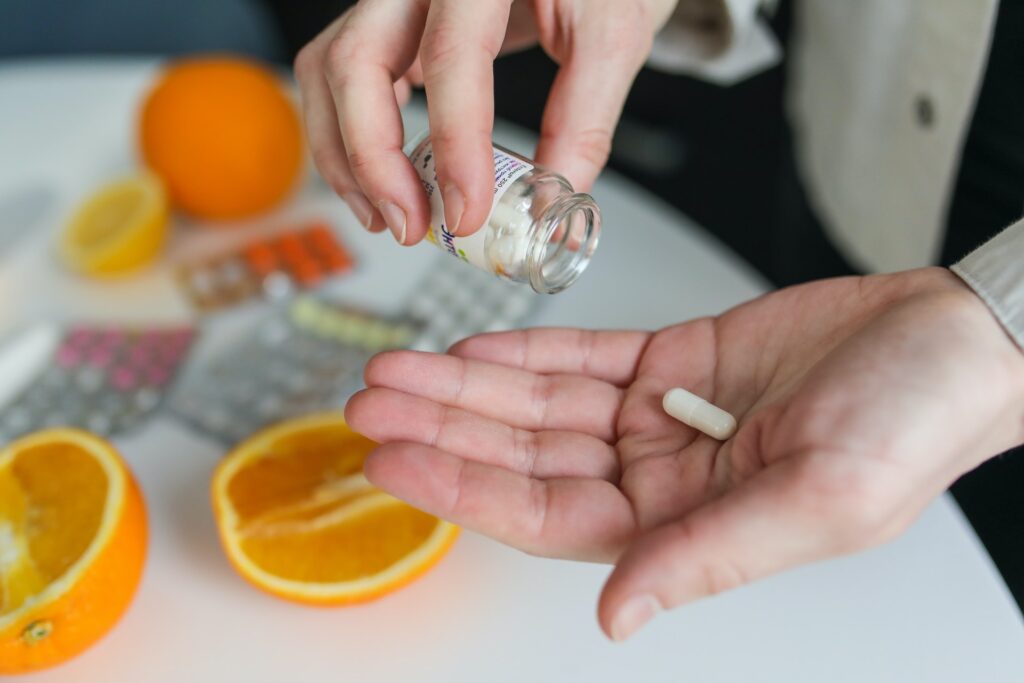
Detox is often the first step in recovery. It’s the process of allowing your body to clear out the alcohol and codeine while managing withdrawal symptoms.
Detox can be done at home with medical support, or in a clinic for more intensive care.
Detox from both alcohol and opioids should be medically supervised, as withdrawal from both can be dangerous.
Self-Help
Self-help groups provide ongoing support through shared experiences:
- Alcoholics Anonymous (AA): Offers support for those struggling with alcohol addiction
- Narcotics Anonymous (NA): For individuals with drug addiction, including codeine dependency
These groups follow a 12-step recovery program and meet regularly in most communities.
Reducing Harm
If quitting alcohol and codeine altogether feels too difficult right now, harm reduction strategies can help reduce the risks associated with continued use.
This might involve:
- Cutting down gradually, instead of stopping all at once
- Avoiding mixing the two substances
- Using alcohol and drugs in safer environments
FAQs: People Also Ask
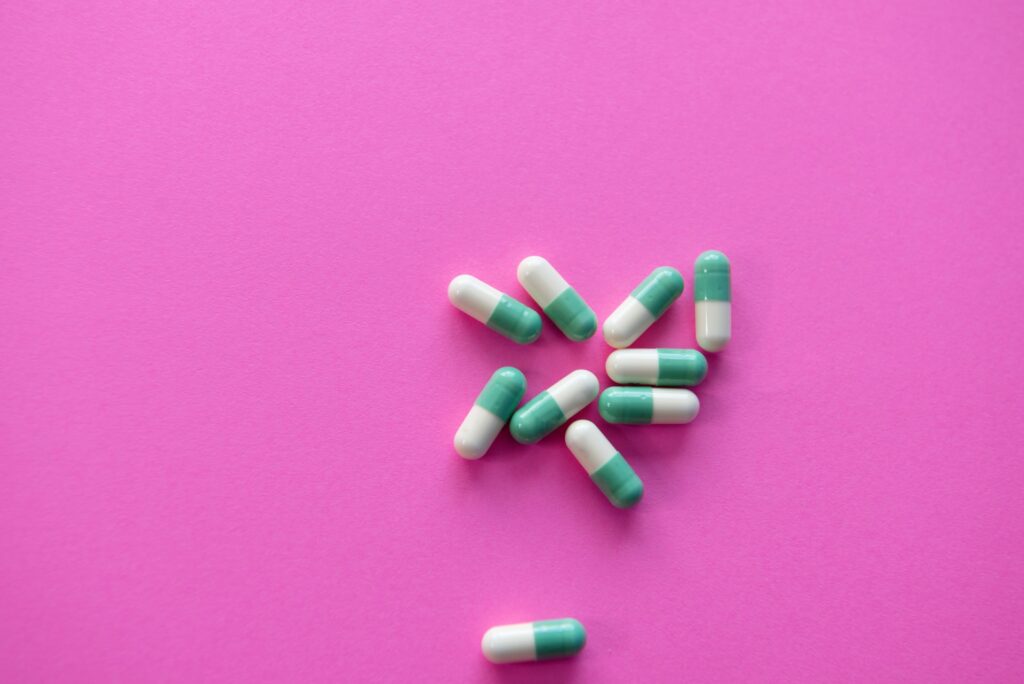
Can You Drink Alcohol While Taking Codeine?
Both alcohol and codeine are depressants, meaning they slow down your brain and body functions, especially breathing.
Mixing them increases the risk of dangerous side effects like extreme drowsiness, dizziness, and respiratory failure.
However, the NHS advises that you can drink on codeine, and recommends trying a few alcohol-free days on codeine first, to see how your body responds to the drug.
What Happens If You Mix Codeine and Alcohol?
Mixing codeine and alcohol can lead to serious health risks. The combination amplifies their sedative effects, making you feel much more drowsy and uncoordinated.
In severe cases, it can cause your breathing to slow down or stop, leading to unconsciousness or even death. Even small amounts of alcohol can dangerously intensify codeine’s effects.
What Are the Symptoms of Codeine and Alcohol Overdose?
An overdose from mixing codeine and alcohol is life-threatening. Common symptoms include:
- Extreme drowsiness
- Confusion
- Slow or irregular breathing
- Cold or clammy skin
- Bluish lips or fingertips (sign of low oxygen)
- Unresponsiveness or unconsciousness[25]
If you notice these signs in yourself or someone else, seek emergency medical attention immediately.
Is It Safe to Drink Alcohol After Stopping Codeine Use?
Once you have stopped taking codeine, it’s generally safe to drink alcohol.
This allows your body to fully clear the codeine from your system.
How Can I Get Help for Codeine and Alcohol Addiction?
If you are struggling with dependence on codeine and alcohol, help is available.
You can speak to your doctor for a referral to a drug and alcohol treatment program or join support groups like Alcoholics Anonymous (AA) or Narcotics Anonymous (NA).
These programs provide guidance, medical support, and a community of people who are going through similar struggles.
How Long Should I Wait After Taking Codeine Before I Drink?
It’s safest to wait at least 24 hours after taking codeine before drinking alcohol.
Codeine stays in your system for several hours, and consuming alcohol too soon after can increase the risk of severe side effects.
Always consult your doctor for advice tailored to your specific situation.
Conclusion: Understanding the Risks and Staying Safe

Mixing alcohol and codeine poses significant health risks.
If you’re prescribed codeine, avoiding alcohol is crucial, as even small amounts can heighten these risks.
Alternatives for pain management should be explored, and it’s essential to recognise the signs of addiction early.
For those struggling with dependence on codeine or alcohol, professional support is available.
Being aware of the risks associated with alcohol and codeine is vital for your safety.
References
[4] https://www.medicines.org.uk/emc/ingredient/270#gref
[5] https://www.healthdirect.gov.au/codeine#used-for
[6] https://www.nhs.uk/medicines/codeine/common-questions-about-codeine/
[9] https://www.nhs.uk/medicines/codeine/about-codeine/
[12] https://www.cdc.gov/alcohol/about-alcohol-use/other-drug-use.html
[13] https://alcohol.org/mixing-with/codeine/
[17] https://adf.org.au/drug-facts/codeine/
[18] https://adf.org.au/drug-facts/codeine/
[19] https://www.ncbi.nlm.nih.gov/books/NBK310652/
[20] https://www2.hse.ie/living-well/alcohol/dependence/withdrawal-symptoms/
[21] https://www.niaaa.nih.gov/alcohols-effects-health/alcohols-effects-body
[22] https://drugfree.org/article/risk-factors-for-addiction/
[24] https://www.nhs.uk/live-well/healthy-body/drug-addiction-getting-help/




